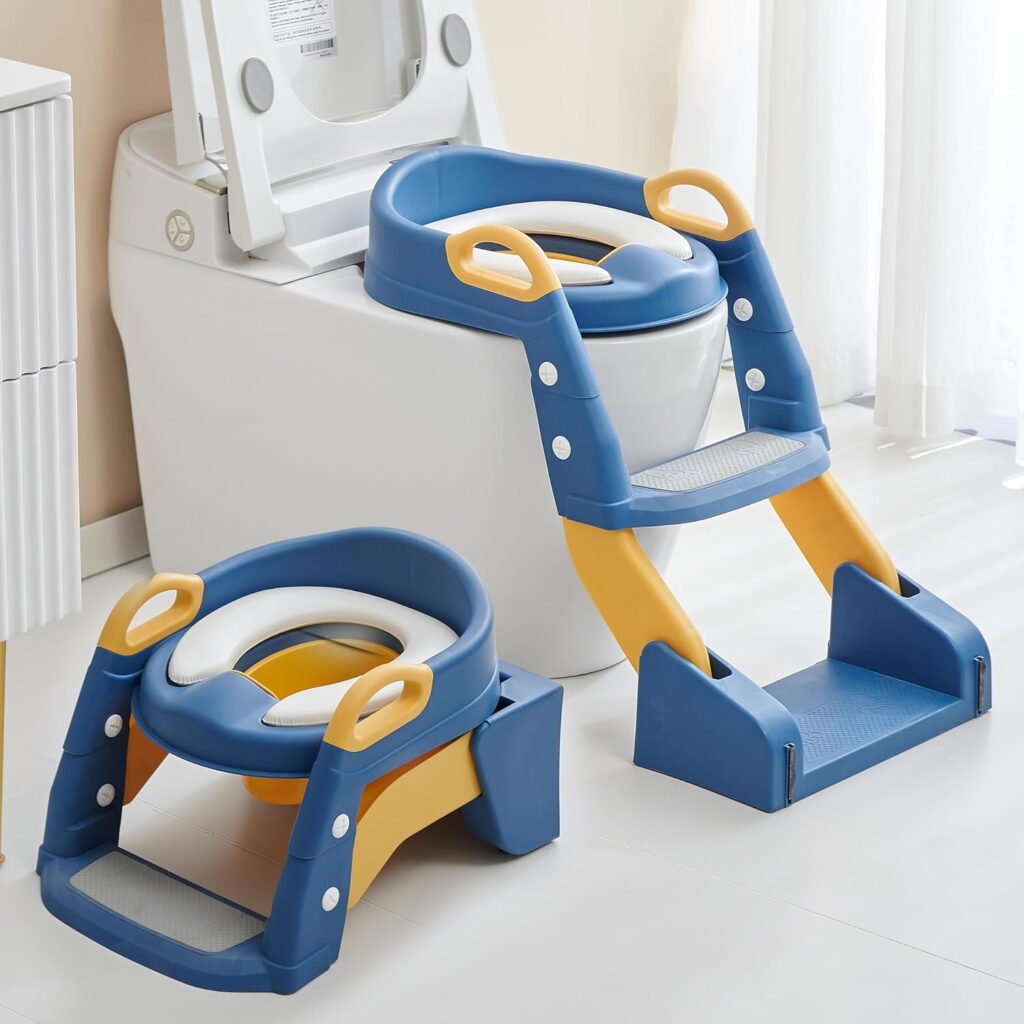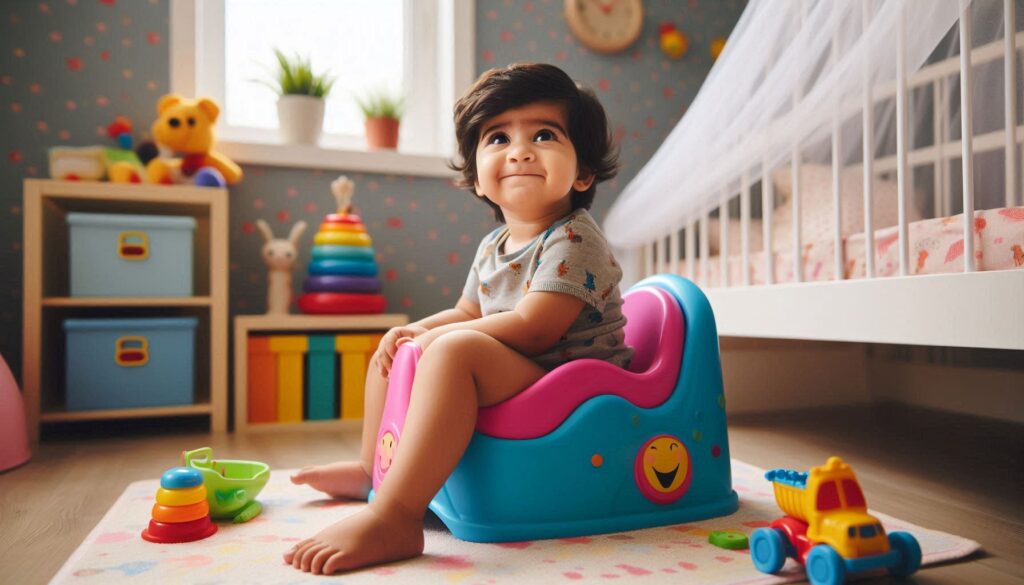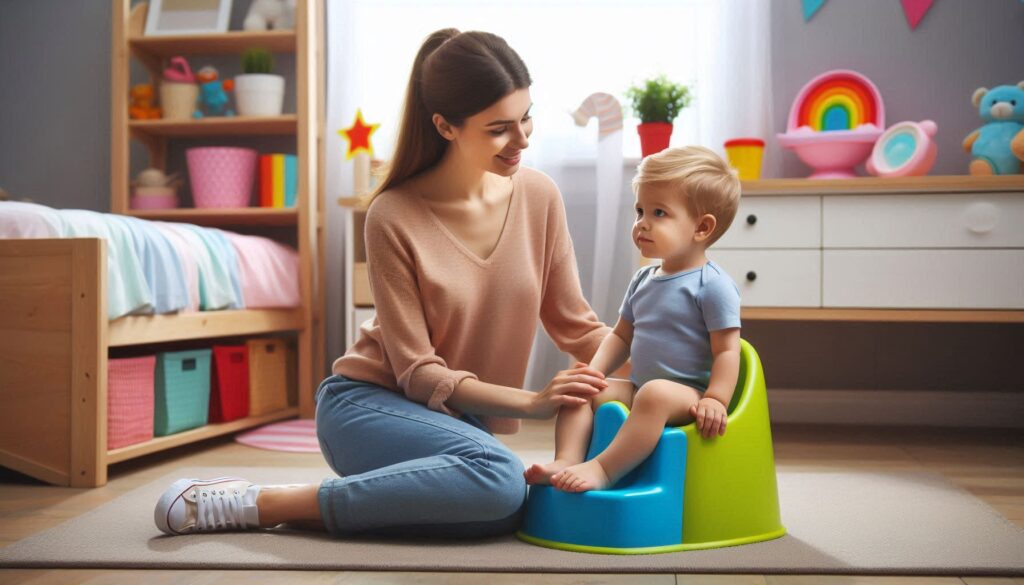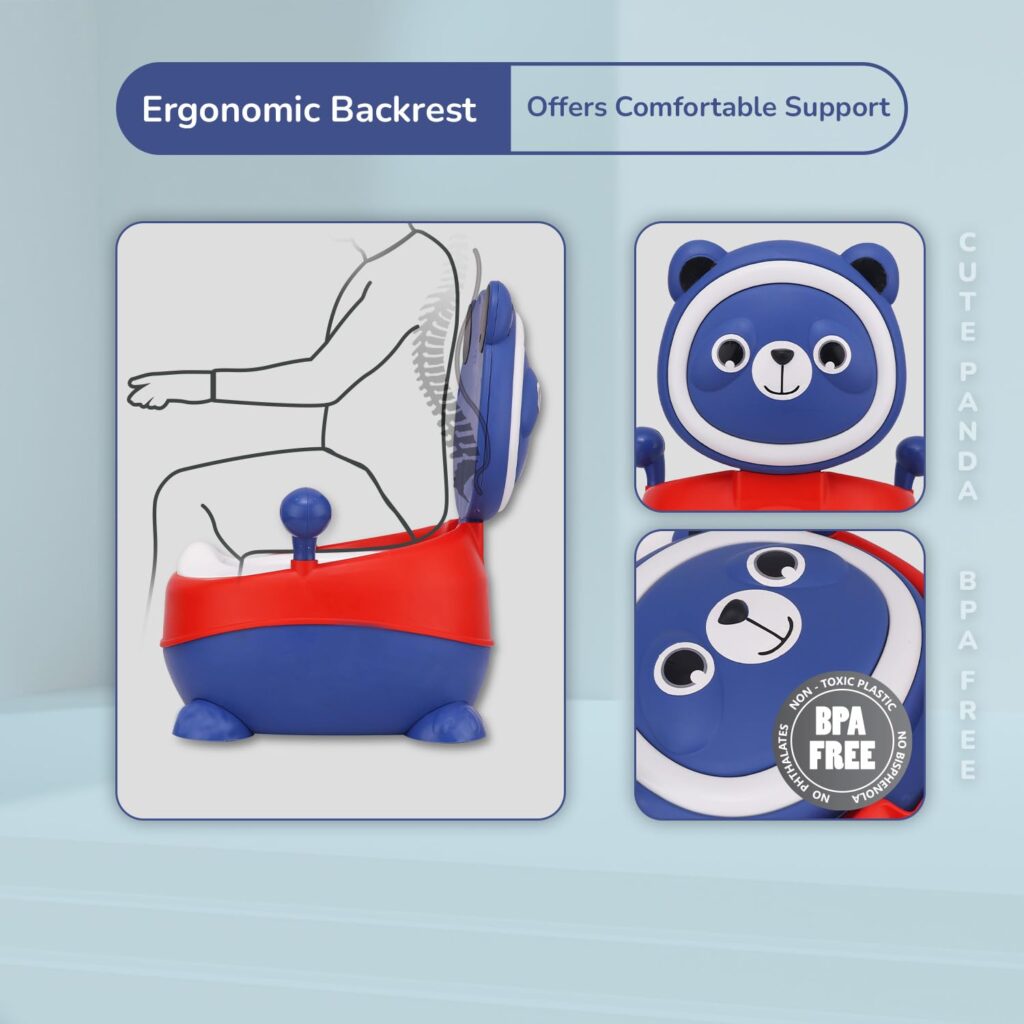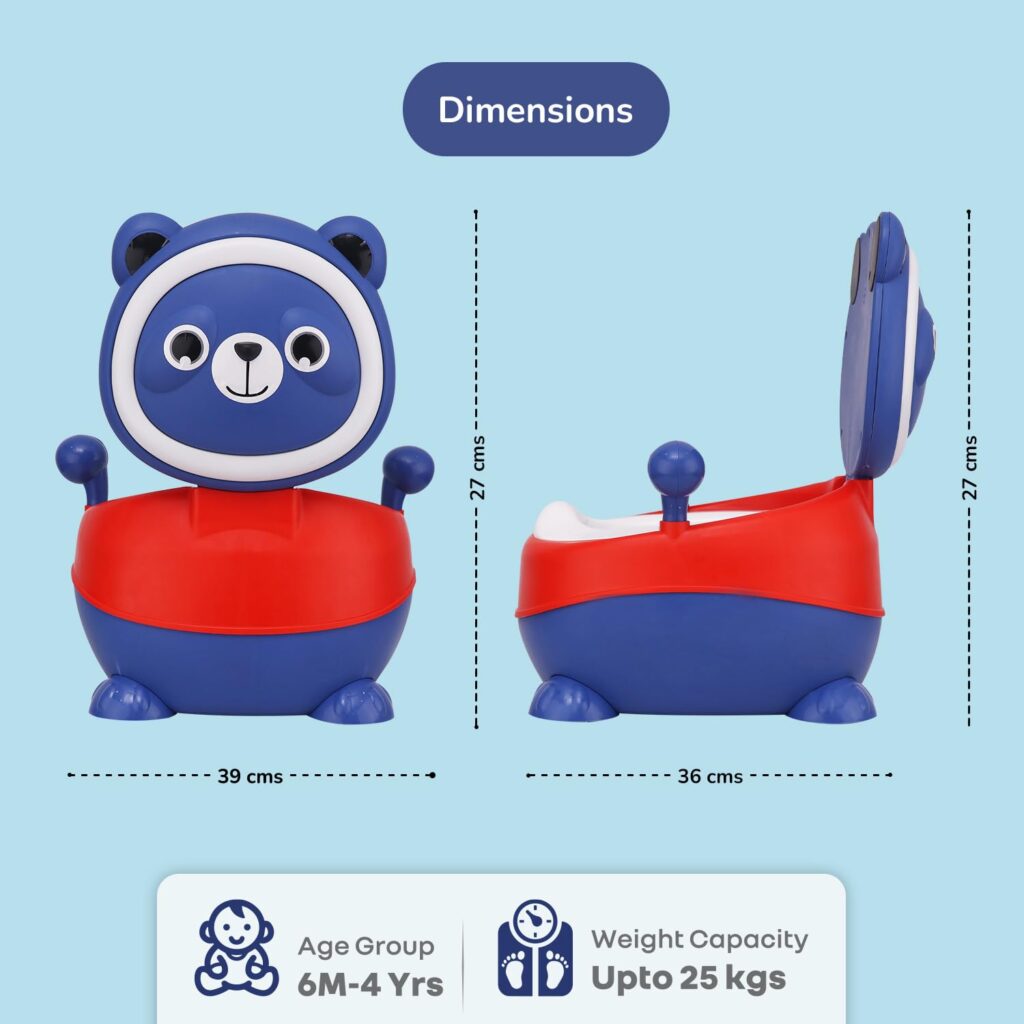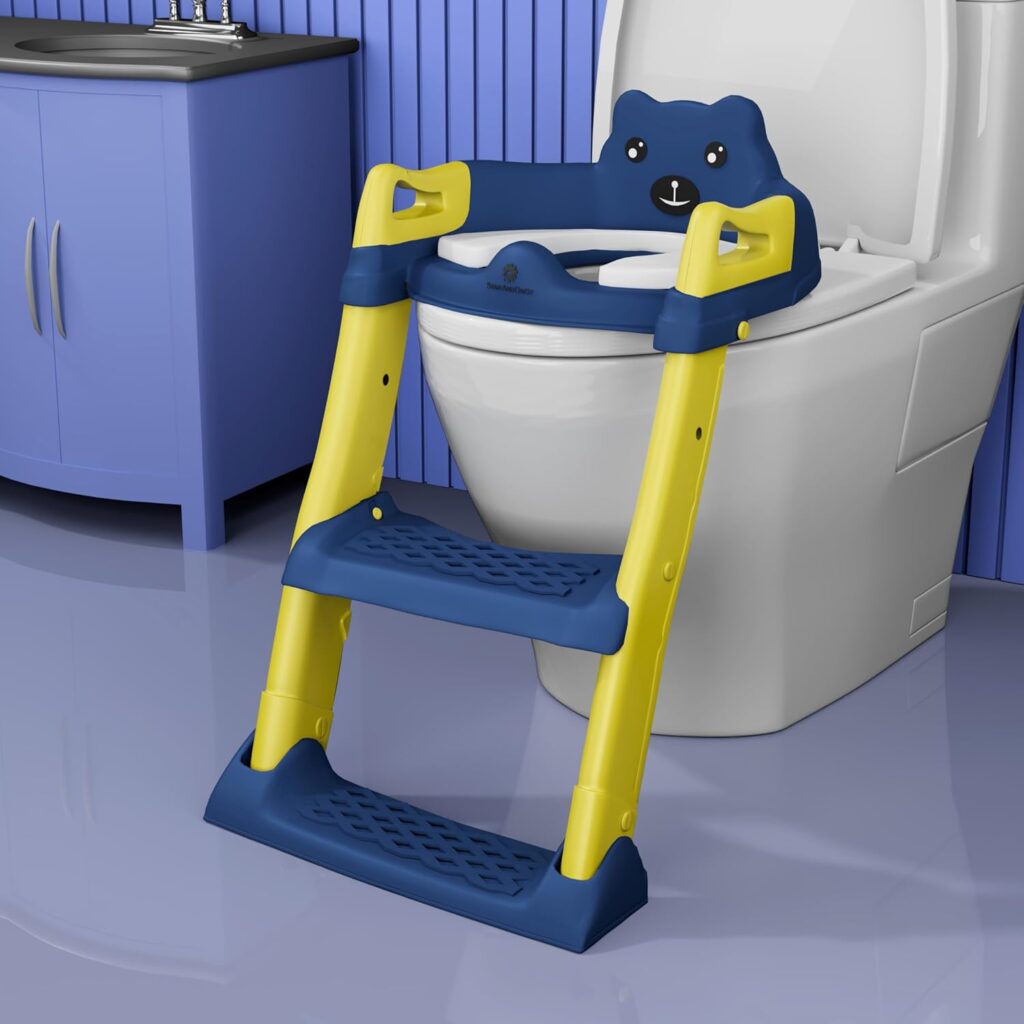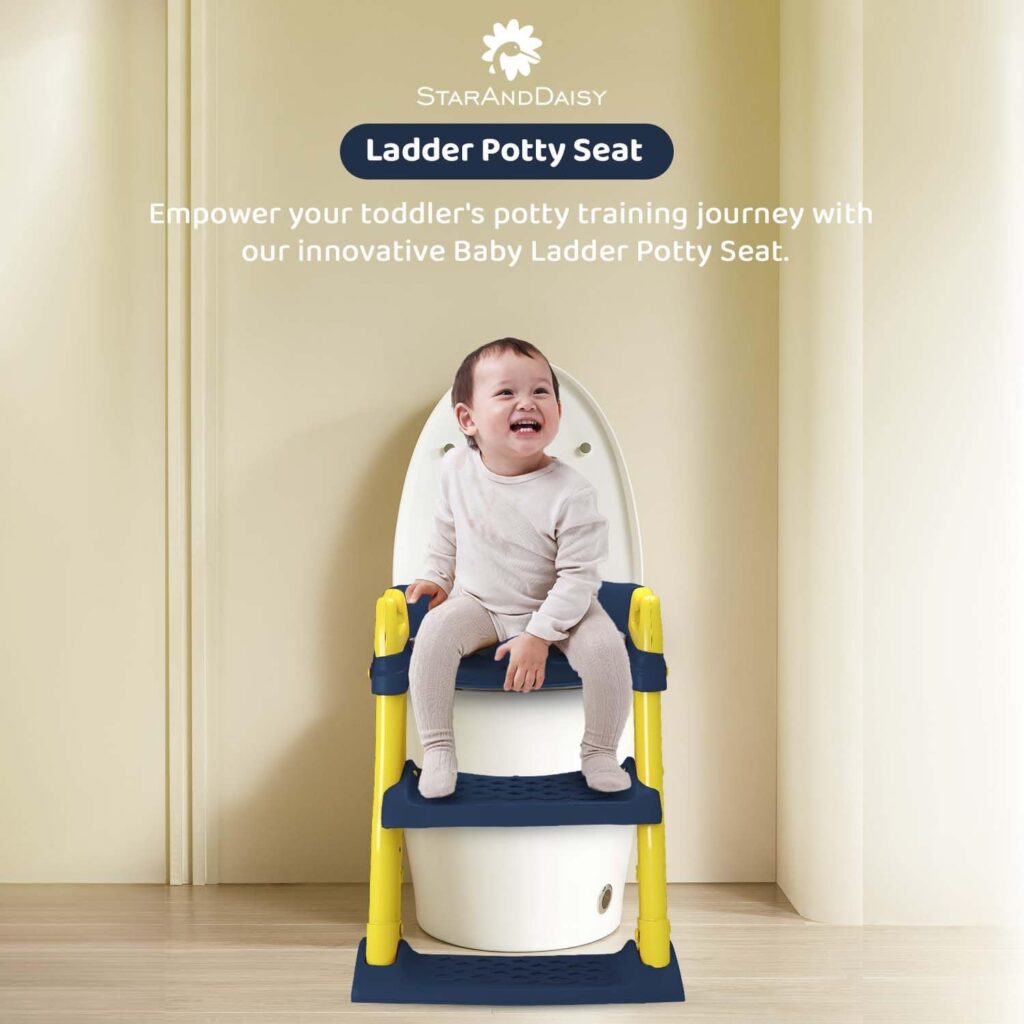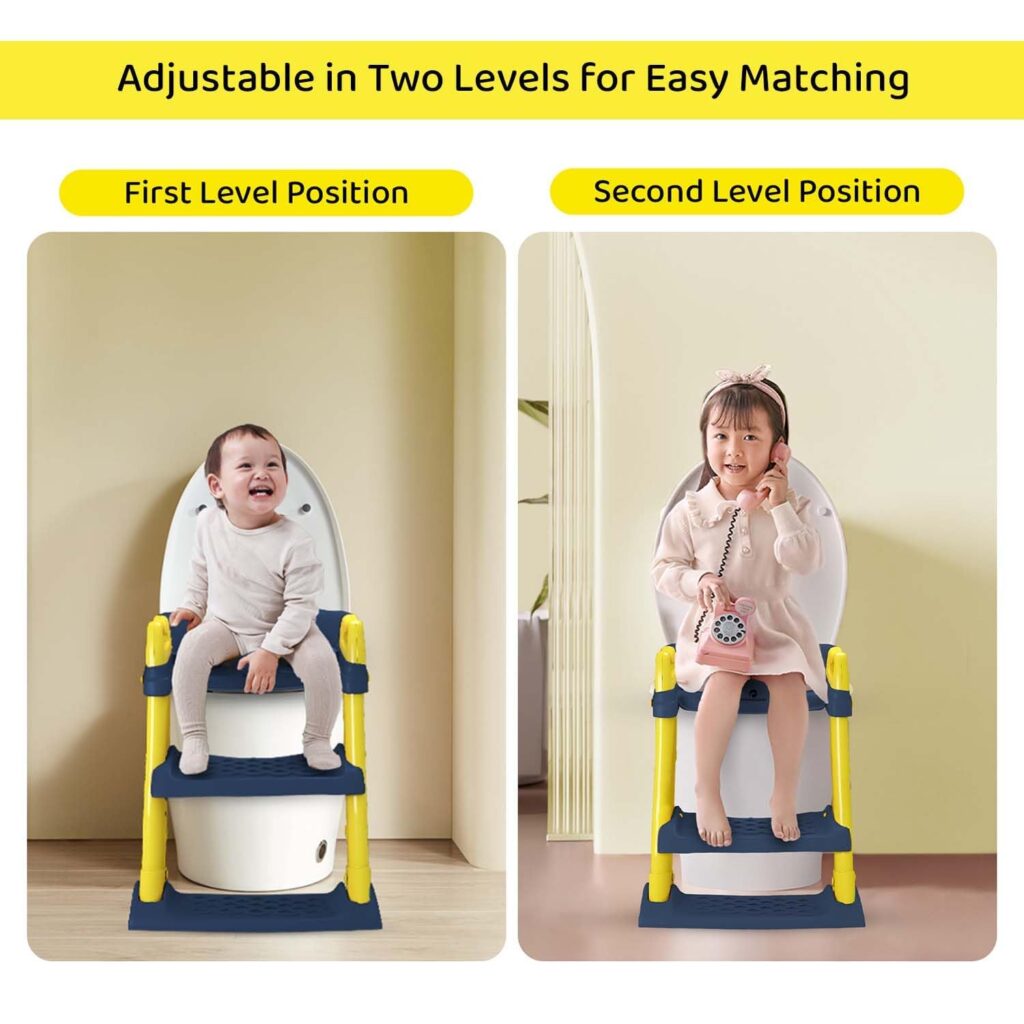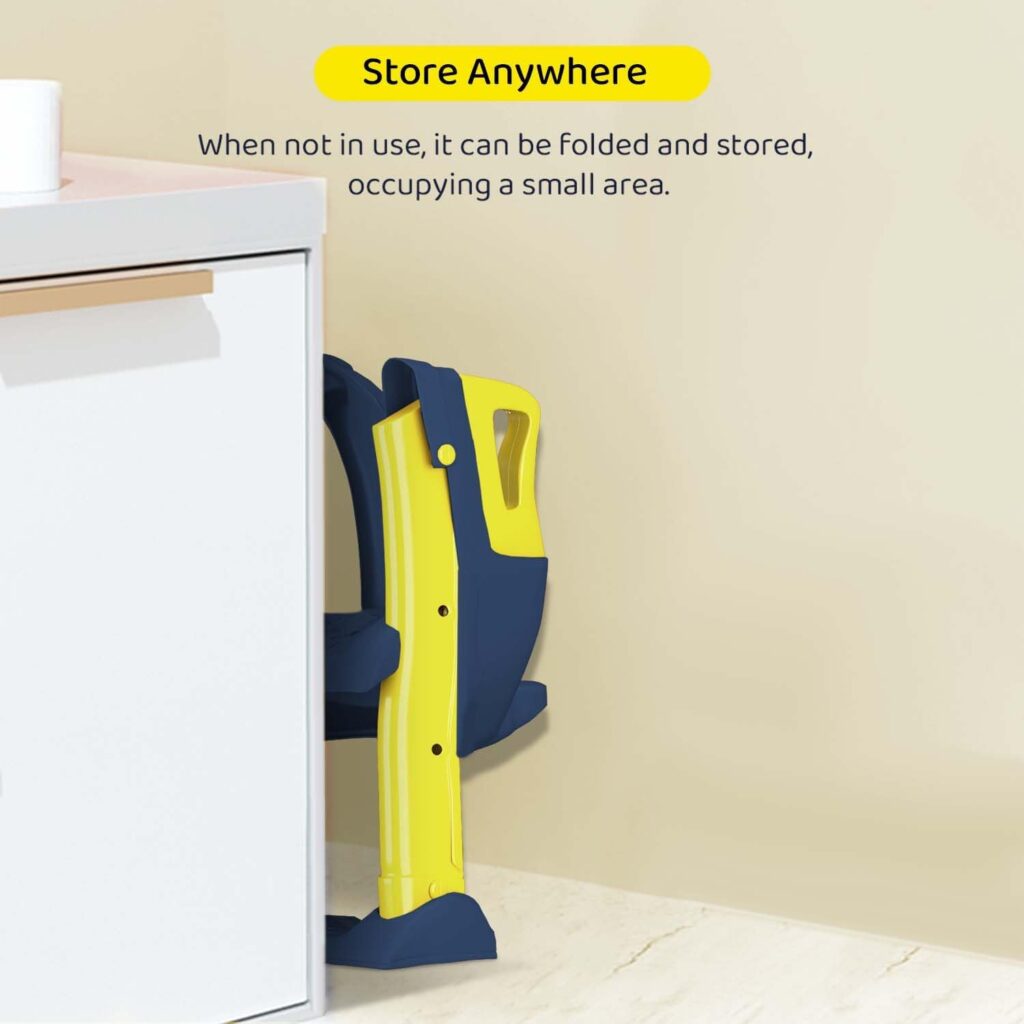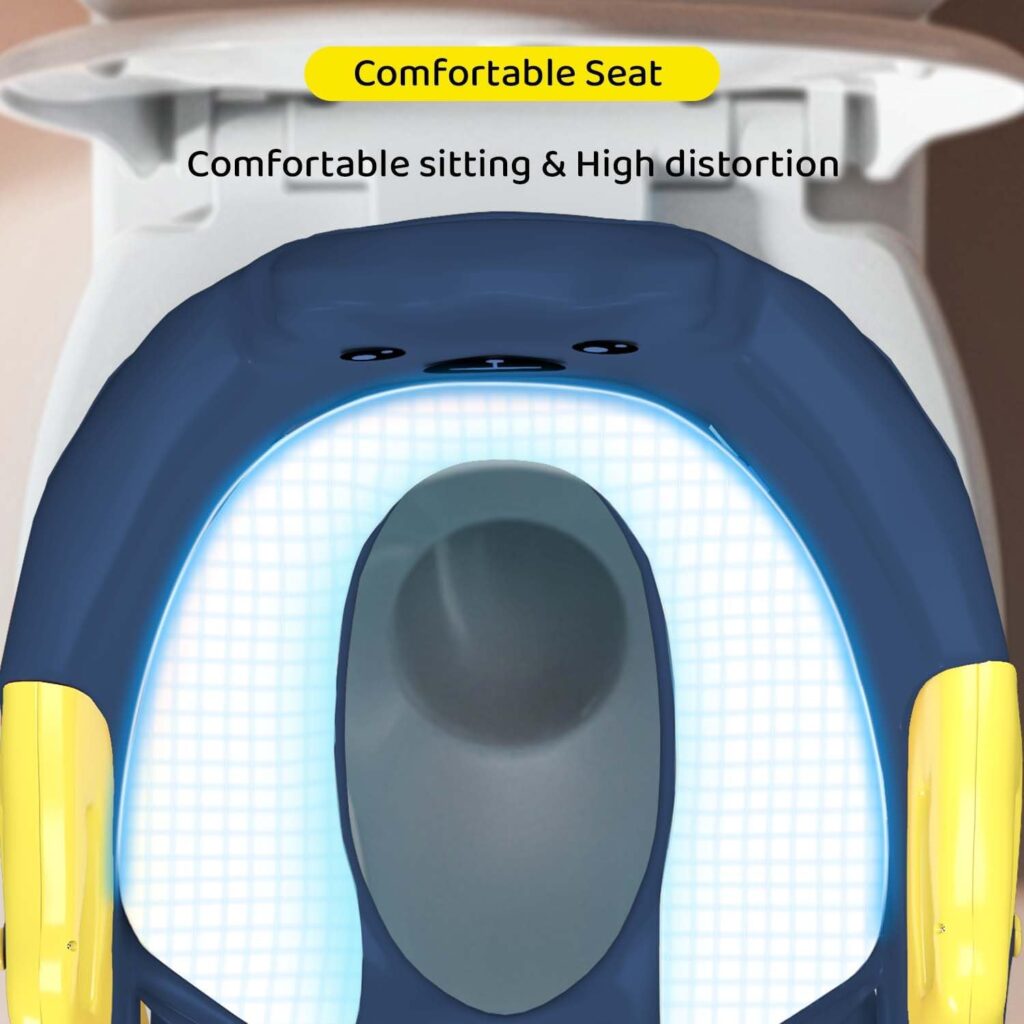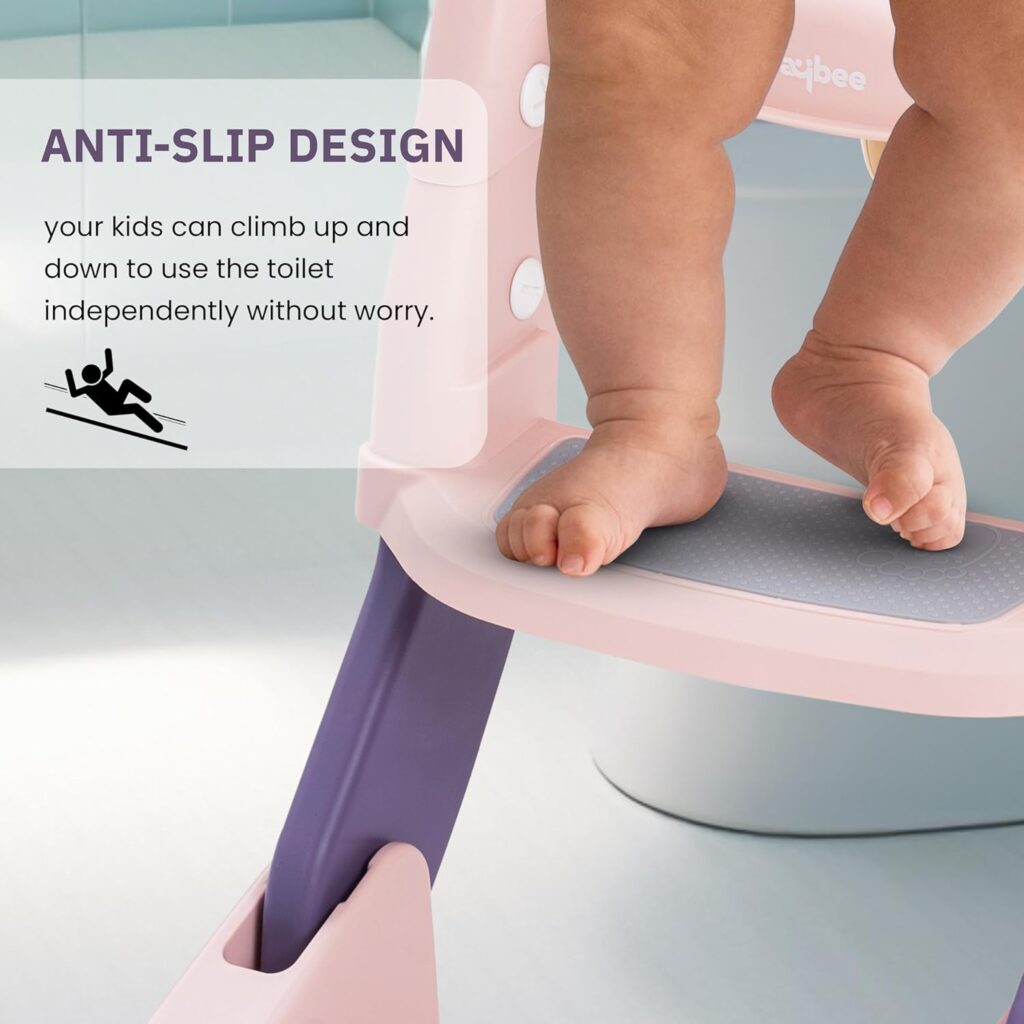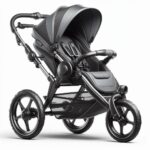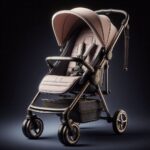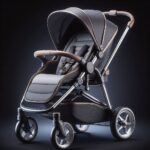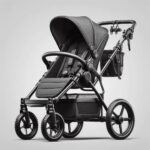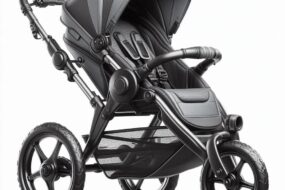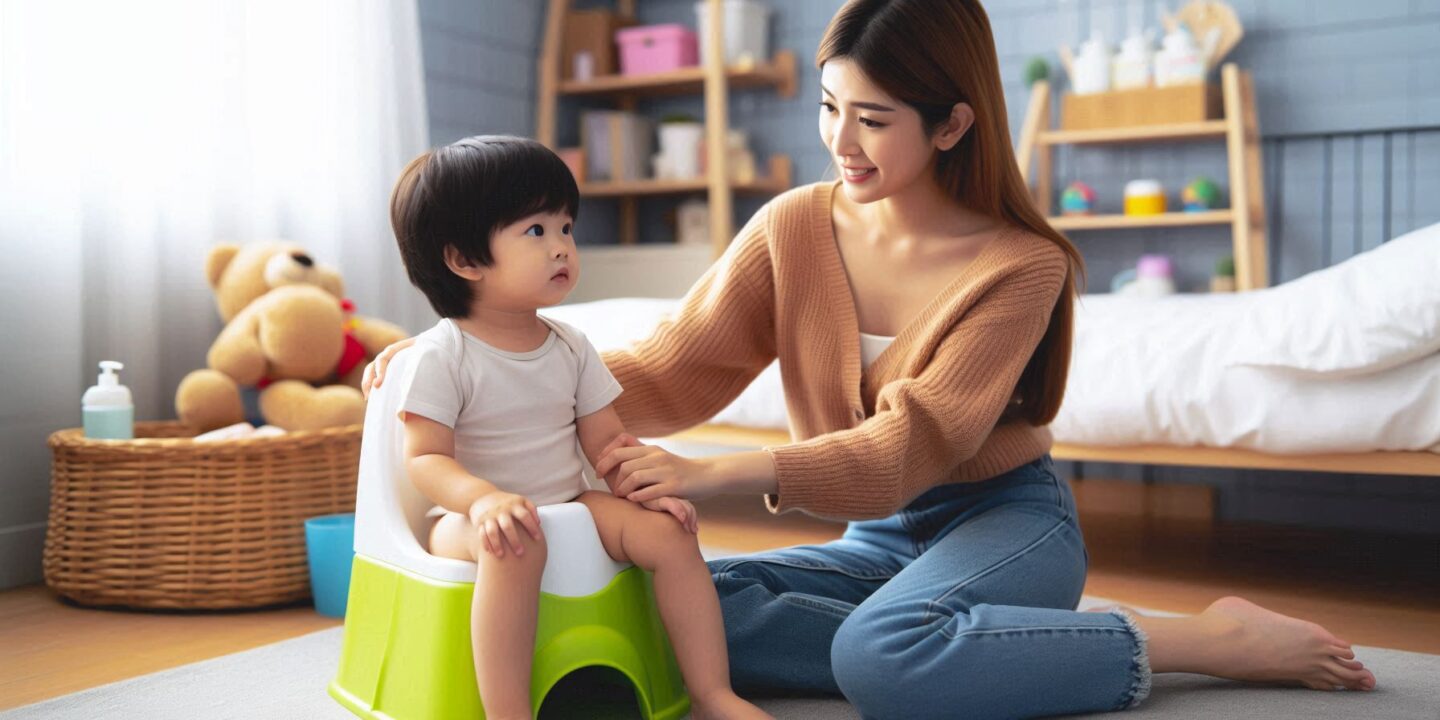
Potty training is a crucial milestone in a child’s development. Although it can be an exciting journey, it may also feel overwhelming for parents who are uncertain about where to start. While each child’s readiness differ, the process typically starts between 18 months and 3 years of age.
Is Your Child Ready to Start Potty Training?
Potty training success depends on various milestones rather than just age. These milestones include how your child moves, behaves, communicates and manages the urge to urinate or have a bowel movement.
These are several clues that can indicate your child is ready to begin potty training. Ask yourself if your child:
- Signals the need to use bathroom by showing certain movements like hopping up & down or tugging at their clothes.
- Can pull their clothes up & down.
- Can walk to the toilet and sit on potty chair.
- Usually follows your instructions.
- Can wait two or more hours before needing to urinate.
- Passes stool three times a day or fewer.
- Can ask simple questions: Here? Where? How? Now? What? When?
If your answer is mostly yes, your child might be ready. But if you mostly answered no, you might want to wait.
Steps To Start Potty Training
Plan potty training for a time when you can fully commit to it. It’s best to engage in a potty training daily for at least three months. Remember, your child may still have accidents and wet or soil their diapers during this process. Stay calm when these accidents occurs, avoid getting angry or punishing your child.
These are few steps you should consider while starting the process:
1. Choose the Right Time: Timing is everything. Begin potty training when your child shows signs of readiness and there are no significant changes happening in their life (like, moving to a new house or starting a daycare). It’s best to avoid starting the process during stressful times.
2. Create a Routine: Setup a consistent potty training schedule by having your child sit on the potty at regular intervals, like after they wake up, after meals or before bedtime. This routine helps them learn when to use the potty and builds a habit over time.
3. Introduce the Potty Chair: Place a potty chair in familiar and easily accessible spot. Allow your child to get used to it by letting them sit on it while fully clothed at first. Gradually move to having them sit without a diaper to help build their comfort and confidence.
4. Celebrate Success: Celebrate each success, no matter how small. Use verbal praise or reward to encourage your child and make the experience enjoyable. Avoid punishments for accidents, as it can lead to anxiety.
5. Teach Hygiene: Teach your child the importance of wiping properly, and ensure they wash their hands thoroughly after using the potty. Make hand washing enjoyable by using fun soaps or singing a song.
6. Get Ready for Setbacks: Accidents will happen, and it’s perfectly fine. Stay calm and let your child know that it’s part of learning. Always have a pair of clothes ready and handle accidents quietly and without drama.
7. Products to Help With Potty Training: The right tools can improve the potty training experience, making it effective and enjoyable. Here are some essential items to consider:
Tips for Success:
1. Be Patient: Every child develops at their own speed. It’s important not to pressure your child to achieve success too quickly and do not loose temper when accidents happen. Reacting negatively can increase your child’s stress levels and delay their development.
2. Positive Environment: Use rewards such as stickers, small treats or praise them to encourage progress.
3. Keep the Potty Chair Accessible: Place the potty chair at easily accessible location to encourage use.
4. Consistent Routine: Maintain the potty training routine you have set. Consistency offers stability and reassurance to your child.
5. Address Anxiety: If your child is feeling anxious, listen to their worries. Try using gentle communication or provide them comforting toys to help them ease their anxiety.
Common Challenges:
1. Regression: Temporary setbacks are completely normal. It’s important to remain calm and consistent to support your child in getting back on track.
2. Resistance & Fear: Some children may be hesitant or anxious about using the potty, particularly if they have had accidents or felt uncomfortable in the past. To make the potty less daunting, consider adding some decorations to it.
Potty Training at Night:
Nighttime training frequently requires more time than training during the day. Here’s how to approach it:
- Wait until your child mostly wakes up with a dry diaper.
- Use waterproof mattress protectors along with nighttime training pants to handle any accidents.
- Limit fluids before bedtime and encourage a bathroom visit before sleeping.
Winter Potty Training Tips:
- Ensure the potty area is warm and comfortable.
- Dress your child in layers that can be easily taken off for quick changes.
- Encourage regular potty breaks to prevent accidents due to cold.
FAQ’s: Potty Training
Q: At what age should I start potty training?
A: Most kids are ready between 18 months and 3 years, but it really depends on the child.
Q: What if my child resists during the potty?
A: It’s best to take a break and try again after some time. Forcing them can lead to anxiety.
Q: How long does potty training usually take?
A: It can vary but most children become fully trained within 3 to 4 months.
Q: How can I handle potty training during travel?
A: Bring a portable potty chair and make sure to schedule regular bathroom breaks. Try to maintain routine as much as you can.
Q: Is it normal for nighttime potty training to take longer?
A: Absolutely, nighttime training typically takes more time. Use protective bedding and encourage bathroom visits before going to bed.
Recommended Products:
Model | R for Rabbit Tiny Tots Panda Potty Training Seat |
|---|---|
Age Group | 6 - 48 Months |
Weight Capacity | Up to 25kg |
Colour Options |
Model | StarAndDaisy Potty Seat for Kids |
|---|---|
Age Group | 1 - 3 Years |
Colour Options | Dark blue-yellow, Beige-cream, Blue-grey, Blue-yellow, Green-yellow, Pink-yellow, Red-yellow |
Model | Baybee Vega Potty Seat |
|---|---|
Age Group | 1 - 8 Years |
Weight Capacity | Up to 40kg |
Colour Options |
Search
Recent Post
Potty Training: Tips and Tools to Make
- February 9, 2025
- 6 min read
Why Crawling Is Important: First Step Towards
- December 31, 2024
- 4 min read
Jogging Stroller: Your Ultimate Companion for Active
- November 21, 2024
- 3 min read



